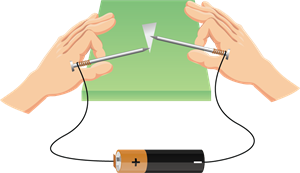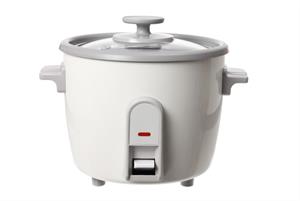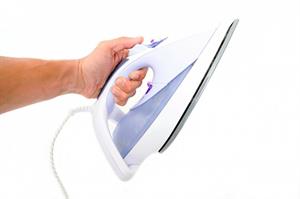
PUMPA - SMART LEARNING
எங்கள் ஆசிரியர்களுடன் 1-ஆன்-1 ஆலோசனை நேரத்தைப் பெறுங்கள். டாப்பர் ஆவதற்கு நாங்கள் பயிற்சி அளிப்போம்
Book Free DemoWhen current flows across a circuit, it causes a variety of effects. The three main effects of electric current are
- Heating effect
- Chemical effect
- Magnetic effect
Important!
Caution:
Only a 9\ V dc battery can be used for the heating and chemical effects experiments. At all costs students should avoid using the main residential electric supply, which is 220\ V ac voltage. If used, it will cause a powerful electric shock to our bodies, causing severe injury.
Only a 9\ V dc battery can be used for the heating and chemical effects experiments. At all costs students should avoid using the main residential electric supply, which is 220\ V ac voltage. If used, it will cause a powerful electric shock to our bodies, causing severe injury.
Heating effect:
The experiment requires an aluminium foil, a wooden board, wires, 9\ V cell, and a pin.

Experimental set-up
Procedure:
- Cut an aluminium foil in the shape of an arrow.
- Make sure that the head of the arrow is pointed.
- Now, place the arrow-shaped foil on a wooden board.
- Connect a thin pin to two wires of a certain length.
- Join the wires to the terminals of the 9\ V electric cell.
- Keep one pin onto the pointed tip of the arrow and another pin about 1 or 2\ mm away.
Observation:
When the pin is kept at the tip of the arrow, the aluminium foil starts melting. This melting of the foil shows the heating effect of the current.
When the pin is kept at the tip of the arrow, the aluminium foil starts melting. This melting of the foil shows the heating effect of the current.
Joule's heating:
When the flow of current is 'resisted', heat is generated. It is because electrons encounter resistance as they move through the wire or resistor. Some amount of work must be done to overcome the resistance, which is then transformed into heat energy.This conversion of electrical energy into heat energy is known as Joule heating. Joule, a scientist, extensively studied this effect. The heating effect forms the basis for all-electric heating appliances such as iron boxes, water heaters, toasters, etc.

An electric cooker

Iron box
Even connecting wires produce a small resistance to the current flow. That is why all electrical gadgets, including the connecting wires, practically become warm when utilised in an electric circuit.